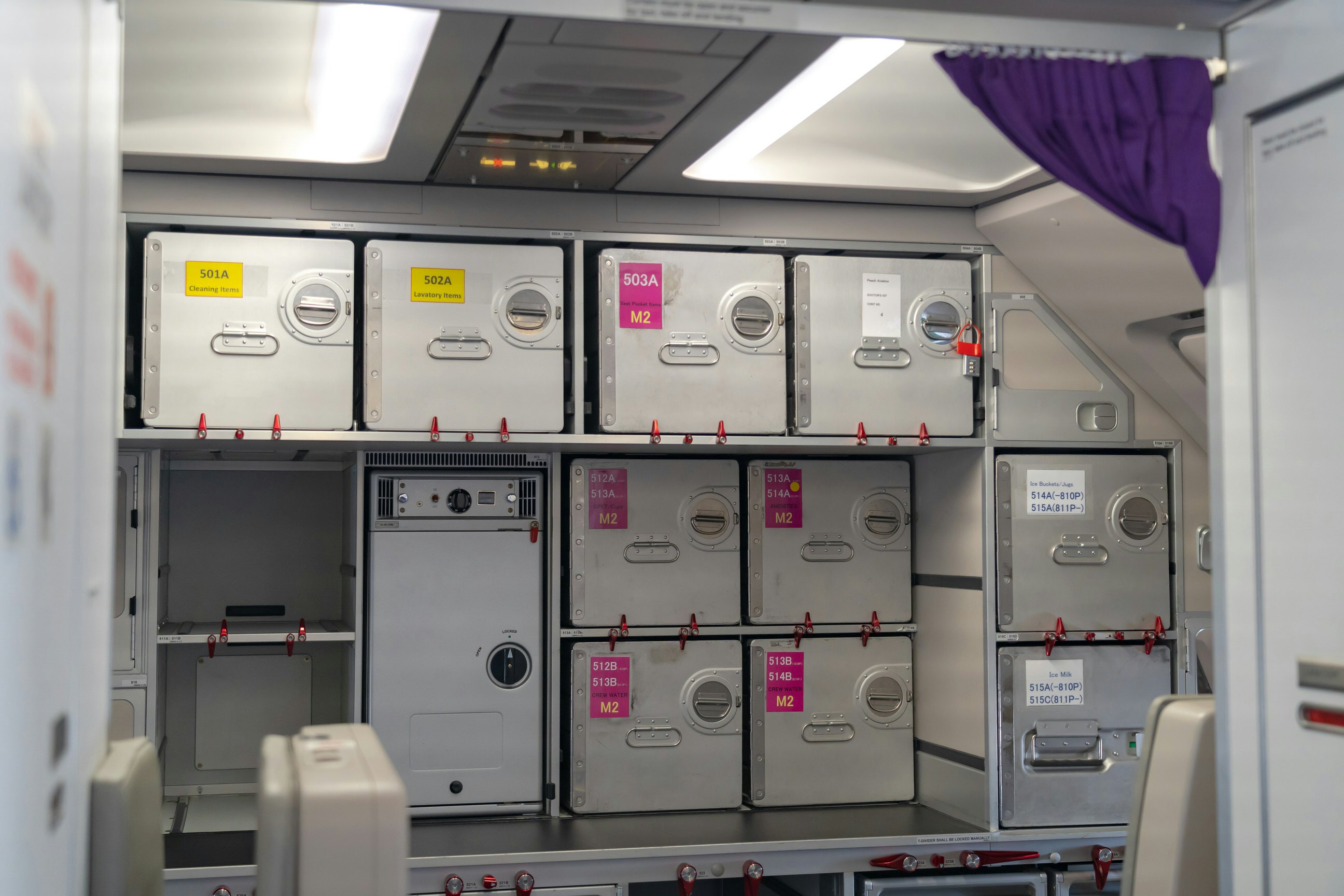

Passengers are feeling the squeeze as airplane toilets get smaller © Jupiterimages / Getty Images
If you’ve flown recently, you might have noticed that onboard toilets — which airlines euphemistically call ‘lavatories’ — are getting smaller. It’s not your imagination. Every year, the engineering geniuses behind everything that goes into your plane work hard to make everything more compact, and the onboard loos are definitely shrinking.

But why? Well, not to put too fine a point on it, lavatories don’t sell tickets. Seats, by contrast, do, and quite a lot of lavatories, especially on larger aircraft, are found in the areas of the plane where seats could go instead.
Shaving off inches
It might seem insane, but if an airline can eke just seven inches (about 18cm; the inside of planes are still, as a rule, measured in inches) of space out of the size of a lavatory, that’s the difference between the last row of the plane being able to recline or being stuck in the upright position for the whole flight.
Those seven inches are exactly how much Collins Aerospace — the large multinational company that makes all kinds of things for aircraft including lavatories for the Boeing 737 — squeezes out with its slimline loo. The last row of seats reclines into a cut-out space from what would have been the lavatory wall. Take a look the next time you’re at the back of a modern Boeing 737 and you’ll see it.

Inside, that means it’s pretty tight, though: the recline is just at the height at which one uses the sink, which is shrunk to a size that means it’s pretty hard to avoid getting water everywhere. All in all, they’re not the greatest to use. You can sort of forgive them for the 737, which used to be a real short-hop kind of airplane, but like every jet the engineers have been stretching the range longer and longer, and on a longer flight the need to use the lavatories increases substantially.
Like this? Try this: Should you avoid water, tea, coffee or ice on your flight?

The kitchen/toilet trade-off
Airbus has a different concept for its A320 family of single-aisle competitor planes to the Boeing 737, and it’s called ‘Space-Flex’. The idea here is to save space by taking the two rear lavatories and moving them to the back wall of the cabin, where part of the galley kitchen would have been. The trade-off is that there’s only half as much space for catering and service, but airlines gain the ability to add perhaps one or two rows of seats — that’s maybe 12 passengers per plane.
If you’re thinking ‘hmm, putting a toilet right next to a kitchen, sounds great’, you’re not the only one: if you fly with any regularity you’ve probably seen the state some lavatories can get in, so it's not the most appealing concept.
The benefit of ‘Space Flex’ for passengers, though, is that the two mini-lavatories can be combined into one larger lavatory to enable wheelchair users and other passengers with reduced mobility to use them. It’s rather awkward: the crew need to do some rearranging of the lavs, but it at least works, which is — astonishingly — more than the laws require.

Very regrettably, there’s a gap in regulations that means airlines and airplane-makers are not required to provide lavatories on a narrowbody plane (any aircraft that has just one aisle) for passengers who need extra space. It’s a real problem for disabled travellers, and so it’s a good thing that Airbus is addressing their needs.
If you want to know more, there are many great resources online: wheelchairtravel.org in the US and flyingdisabled.org.uk in the UK are great places to start. If you want to petition for airlines flying narrowbody planes like the 737 and A320 to provide adequate facilities, contact your elected representatives.
Bigger planes don't mean more lavatories
On bigger planes, the trend is to install fewer lavatories — or the same number of loos but more seats — for the same reason as their smaller cousins: lavatories don't generate profit. If you thought gaining seven inches was exciting, just imagine how happy the airline accountants and cabin designers get if you can take out an entire lavatory or two!
As a rule, the bigger the plane, the bigger the space for the lavatory, but at least all widebody planes (those are the ones with two aisles) have to have a loo accessible for passengers with reduced mobility and other disabilities.
You might also like: What happens if you don’t put your phone on airplane mode on a flight?

That’s where you’ll find all the onboard showers that the airline ads show you on Emirates and Etihad, the two big airlines from the United Arab Emirates, for example. German airline Lufthansa, meanwhile, is a little more modest in ambition and doesn’t have a shower, but — and here's a bit of airline trivia for you — it does offer one of the only onboard urinals in the sky in its first class loos.
Even in economy, there are some surprises: Airbus offers a downstairs lavatory on its A330 and A340 aircraft. This involves adding a small staircase to descend into a space with several conveniences. This area is usually used for baggage but don’t worry, it’s pressurised just like the cabin! You’ll find this arrangement on a few airlines, including Lufthansa’s A340-600.
The common wisdom from regular travellers, though, is that the best loo on the plane is the one you pop to in the terminal just before you board.
Aviation journalist John Walton writes regularly on travel for Lonely Planet.














